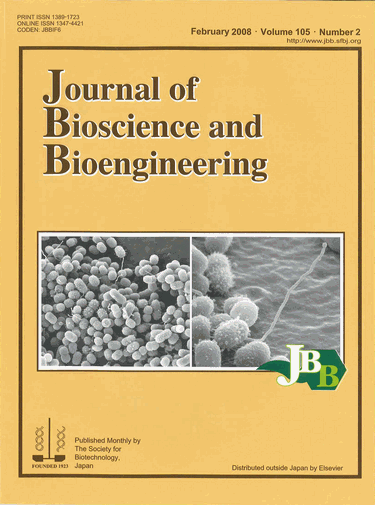Journal of Bioscience and Bioengineering Vol. 105, No. 2 (2008)
Vol. 105, February 2008
Extending and growing bacterial cell appendages on a highly adhesive bacterium, Acinetobacter sp. Tol 5.
This bacterium has at least two kinds of cell appendages, which are responsible for high adhesiveness of this bacterial cell. The bacterial cells have a small number (typically one) of anchor for a long distance interaction of several hundred nanometers with surfaces. They also have many peritrichate fibrils for a short distance interaction of several to several ten nanometers. These bacterial adhesive nanofibers are produced from a carbon source in the presence of surface areas sufficient for cell adhesion. We can see the peritrichate fibrils just sprouting and the anchors growing to longer than 3 μm on the photomicrographs.
Related article: Ishii, S., Miyata, S., Hotta, Y., Yamamoto, K., Unno, H., and Hori, K., Ishii, S., Miyata, S., Hotta, Y., Yamamoto, K., Unno, H., and Hori, K., “Formation of filamentous appendages by Acinetobacter sp. Tol 5 for adhering to solid surfaces”, J. Biosci. Bioeng., vol. 105, 20-25 (2008).
⇒JBBアーカイブ:Vol.107 (2009) ~最新号
⇒JBBアーカイブ:Vol. 93(2002)~Vol. 106(2008)
